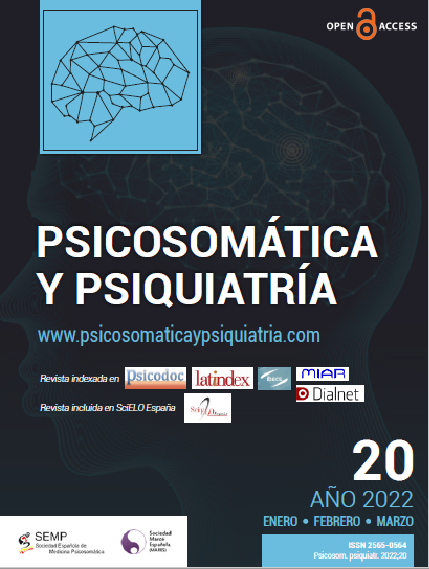Griefbots to say goodbye to our deceased loved ones? Some psychological and ethical considerations. Monographic: Use of information and communication technologies in mental health and psychosomatics: Expansion during and after the pandemic
Article Sidebar

Main Article Content
ABSTRACT
The COVID-19 pandemic has caused an increase in the number of bereaved people (four for every death), as well as a higher incidence of the so-called complicated grief. Among the factors behind the latter, it has been highlighted the impossibility of “saying goodbye” to the loved ones and performing rituals of passage. In this pandemic context, which also coincides with the development of artificial intelligence applied to bereavement, the question arises about the emerging role of applications such as griefbots, i.e., chatbots based on the fingerprint of the deceased that offer the bereaved the possibility of talking to their loved ones after their death. This theoretical article reflects on some of the psychological and ethical implications of the implementation of these new technologies in the field of bereavement, highlighting their mediational and therefore socio-cultural nature. After contextualising the griefbots within the broader framework of other technologies that have (and continue to) mediate our grieving experience throughout history, we analyse the possibilities introduced by the Internet –viz., the new ways of communicating with the dead through social networks, as well as the digital permanence of our deceased loved ones in cyberspace. Next, we analyse the particularities of griefbots, focusing on the two-way communication with the dead allowed and the sense of simulation derived from this virtual interaction allowed by this technology. After contrasting, in the discussion section, the main possibilities of the Internet and griefbots –and their respective implications on mourning, death and our imaginary relationship with those who are no longer with us– we conclude by pointing out some ethical issues raised by the use of artificial intelligence in the field of mourning.
Article Details
Copyright
This work is published under a license Creative Commons Reconocimiento-CompartirIgual 4.0 Internacional (CC BY-SA 4.0)
The authors maintain all copyrights and the journal reserves the rights of the first publication of the article.